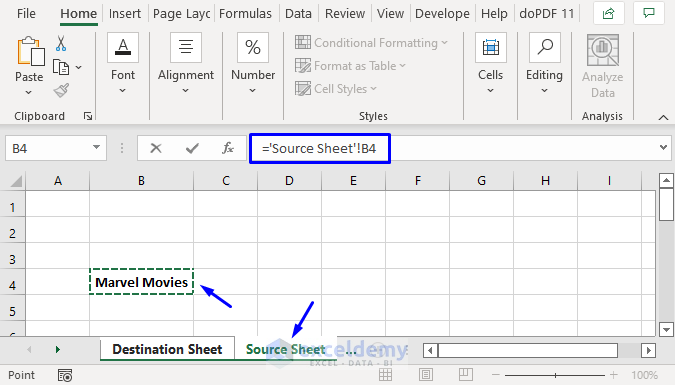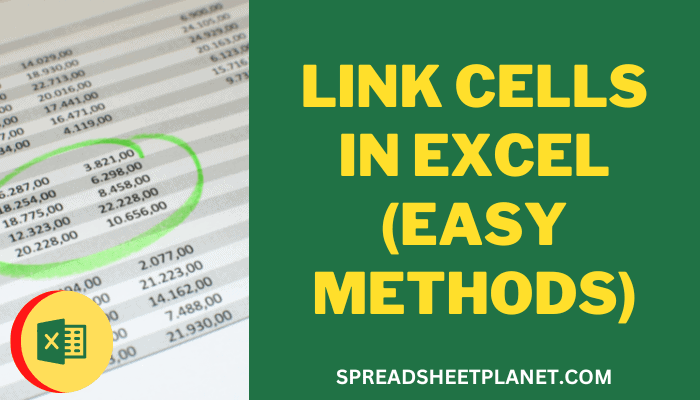Interconnect Two Excel Sheets: Easy Linking Tips

In the modern business environment, where data flows incessantly, the ability to connect and synchronize information across different applications and tools is crucial. Among the most commonly used tools for managing data is Microsoft Excel. Whether it's tracking inventory, managing budgets, or analyzing marketing data, Excel remains a go-to for many professionals. But how can you streamline your workflow by ensuring that data entered in one sheet automatically reflects in another? Here, we'll explore straightforward methods to interconnect two Excel sheets for seamless data management.
Why Link Excel Sheets?

Before delving into the “how”, let’s understand “why” linking Excel sheets can be beneficial:
- Time Saving: Eliminates the need for manual data entry across multiple sheets.
- Data Consistency: Ensures that all changes or updates are reflected universally, minimizing errors.
- Improved Collaboration: Allows team members to work on different aspects of the same project simultaneously.
- Scalability: As your data grows, linking sheets makes scaling your operations easier.
Methods to Link Excel Sheets

Linking sheets can be accomplished through several methods, each suited to different needs:
1. Using Formulas

The most straightforward method involves using Excel formulas to reference cells from one sheet to another.
Here’s how:
- Open the Excel workbook containing the sheets you want to link.
- In the destination sheet, select the cell where you want the linked data to appear.
- Type an equals sign (=) and then click on the source sheet. Select the cell you want to reference.
- Press Enter, and the formula will reference the source cell, displaying its value in the destination cell.
⚠️ Note: Ensure the source and destination sheets are in the same workbook for this method. If they're in different workbooks, you'll need to reference the workbook in the formula as well.
2. Hyperlinks

For scenarios where you need to directly navigate to another location within the same workbook or to a different workbook:
- Right-click the cell where you want to insert the hyperlink.
- Choose “Link” from the context menu, then select “Insert Link.”
- Under “Place in This Document,” choose the destination sheet and cell.
- Click “OK” to set the hyperlink.
3. Data Consolidation

When dealing with multiple sheets of similar data structure, you can consolidate:
- Select the destination sheet and choose “Data” > “Consolidate.”
- Choose the function to apply (e.g., Sum, Average).
- Select the reference data range from source sheets, adding ranges as necessary.
- Opt to link the source data so that any changes in the source will update the consolidated result.
4. Power Query

For complex data integration:
- Go to the Data tab and select “From Other Sources,” then “From Microsoft Query.”
- Set up a connection to your Excel files as you would with an external database.
- Create a query to pull data from multiple sheets or workbooks and link it to your current workbook.
While this method is more advanced, it offers extensive options for data manipulation and linking, especially useful for large datasets or when integrating with external sources.
Advanced Tips for Linking Sheets

- Dynamic Named Ranges: Use dynamic named ranges for flexible cell references that adjust when data is added or removed.
- Power Pivot: Utilize Excel’s Power Pivot for more powerful data modeling and linking multiple sources.
- VBA Macros: For automated linking, VBA macros can be written to establish or update links programmatically.
💡 Note: When using external references or hyperlinks, always ensure the workbook is saved with an absolute path for consistent linking. If the location changes, Excel might fail to locate the source.
Final Thoughts

Linking Excel sheets, as discussed, provides numerous benefits in terms of efficiency and data integrity. Whether you’re managing financial records, project timelines, or inventory lists, ensuring your data is connected can dramatically enhance your productivity. By using formulas, hyperlinks, data consolidation, or even advanced tools like Power Query and VBA, you have the means to create a cohesive and dynamic data environment. Remember, while these methods can seem technical at first, practice and understanding Excel’s capabilities will make managing and sharing data across multiple sheets a breeze.
What are the risks associated with linking sheets?

+
Linking sheets can lead to issues if source data changes unexpectedly, path references break, or if circular references cause computational problems. Always ensure backups and keep source data integrity in check.
Can I link sheets from different Excel files?

+
Yes, you can. However, you’ll need to use external references in formulas or create hyperlinks. It’s important to use absolute file paths to avoid broken links.
How often does the data update in linked sheets?

+
Data updates occur when Excel recalculates formulas, typically when opening the workbook, when data changes, or through a manual recalculation (F9).
What if the link to the source data breaks?

+
If a link breaks, Excel will show an error in the cells referencing the broken link. You can re-establish the link manually or update the file path if the source has moved.